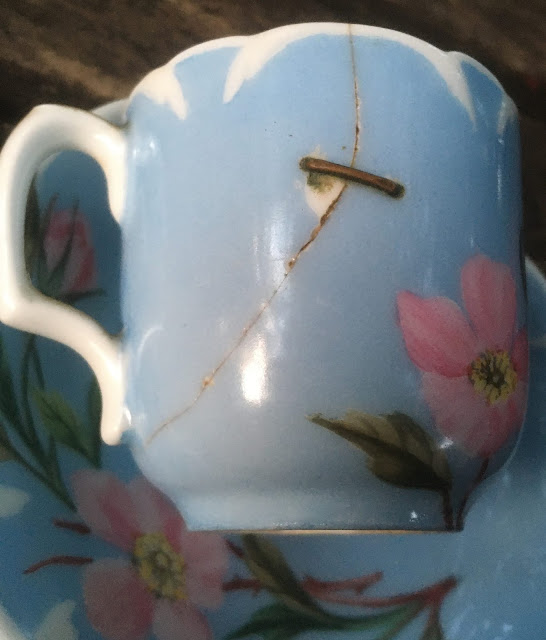My wife was sorting and cleaning some old china she had inherited years ago, among them was this small teacup which had been repaired in a way I had never seen. Small holes had been drilled into the china, then staples inserted, clamping the two broken pieces together. Presumably the broken joint was also glued with some unknown substance, inside the cup there is only the crack. It's a simplified version of the Japanese technique Kintsugi, the art of putting broken pottery pieces back together with gold - built on the idea that in embracing flaws and imperfections, you can create an even stronger, more beautiful piece of art.
Apparently this method of repair is not uncommon, more on the technique here.



3 comments:
Beautiful... The Art of Repair...
Something similar here, applied to non-weldable cast metals:
https://metalock.com.mt/metalock_repair.html
That's interesting! I once saw a water jacket repair to a tractor engine block that someone had knitted together using a series of overlapping tapped holes/threaded-in rods, must have been very time consuming,but it was beautiful.
My MiL has several antique cups repaired using this method. I assume this would be 'period correct' in the gearhead universe.
Re the engine block repair: Decades ago, I saw a cracked block repaired using a 'cleat', 'staple' or whatever they called it. The cleat thingie was a series of intersecting discs which was hammered into a set of holes drilled into the block. Presumably a jig was required to get the hole spacing correct.
rdguy
Post a Comment